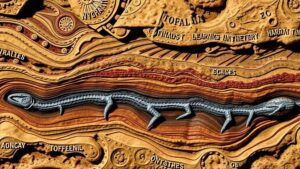Using Cemetery Records and Burial Maps for Artifact and Relic Discoveries
Using Cemetery Records and Burial Maps for Artifact and Relic Discoveries
The integration of cemetery records and burial maps into the realm of archaeological research provides a significant avenue for uncovering artifacts and relics indicative of historical and sociocultural contexts. This approach is particularly relevant in regions where the preservation of historical data is critical to understanding past populations and their interactions. By evaluating these records, researchers can not only trace lineage and familial connections but also unearth material culture evidence that enriches our understanding of history.
The Historical Importance of Cemetery Records
Cemetery records, often containing vital information such as the names, dates of birth and death, and burial locations of individuals, serve as primary sources for genealogical research and historical analysis. For example, the census data from the United States shows that comprehensive records began being systematically kept in the 19th century. In 1850, data recorded in cemeteries became essential, as this was around the time when formal genealogical methods began to evolve with tools that included the use of burial registers.
According to a study by the National Archives, more than 50% of Americans have ancestry linked to individuals buried in cemeteries across the country. This finding underscores the potential for cemetery records to reveal community structures, migration patterns, and even socio-economic status through the analysis of burial artifacts and practices.
Burial Maps: A Tool for Visualizing Historical Context
Burial maps serve as an essential visual aid in understanding the layout and organization of cemeteries. e maps often indicate sections designated for different communities, religious affiliations, or historical periods. An example is the burial map of the historic Mount Auburn Cemetery in Massachusetts, established in 1831, which uses a system of designated sections to represent different cultural and ethnic groups, reflecting the area’s demographic evolution.
The use of Geographic Information Systems (GIS) in mapping these sites provides a sophisticated tool for researchers. GIS technology enables the layering of various data sources–such as social history, topography, and demographics–creating a comprehensive understanding of spatial distributions. This method has been implemented in several projects, including the Mapping Mortality project at the University of Southern California, which analyzes urban cemeteries struggling with the preservation of historical integrity.
Methods for Artifact and Relic Discovery
Field Surveys and Excavations
Cemetery records combined with burial maps have been pivotal in guiding archaeological field surveys and excavations. The concept of a contextual approach involves establishing the historical significance of burial sites, thus determining potential areas ripe for exploration. For example, utilizing burial records at the historic Elgin Cemetery in Illinois, a team of archaeologists uncovered artifacts that date back to the mid-1800s, including personal items and grave markers, which collectively provide insights into the lives of those interred.
Collaboration with Local History Experts
The success of utilizing cemetery records for artifact recovery often depends on collaborations with local historians and genealogists. For example, the partnership between the Nelson County Historical Society and a research team at the University of Virginia resulted in the detailed cataloging of burial artifacts from the late 1700s to early 1800s in Virginia. This collaboration not only facilitated the unearthing of relics such as ceremonial objects but also included extensive documentation of the history surrounding the artifacts.
Real-World Applications and Case Studies
The University of Southern Maines Cemetery Project
A notable instance of cemetery record usage is the University of Southern Maines Cemetery Project, which integrates burial records with archaeological studies to investigate the historical landscape of the Portland area. The project revealed previously unknown burial practices among the citys early settlers, utilizing cemetery maps to guide exploratory digs that unearthed historical artifacts from the 18th century, enhancing the scholarly understanding of colonial life.
The Freetown Burial Ground Investigation
In 2019, an archaeological investigation in Freetown, Massachusetts, leveraged burial maps to recover artifacts believed to belong to the towns early African American community. This investigation led to the discovery of over 200 artifacts, including personal items that painted a rich tapestry of the social and cultural practices of this underrepresented community.
Challenges and Considerations
While utilizing cemetery records and burial maps holds significant promise for artifact discovery, certain challenges exist. Preservation issues, inconsistencies in record-keeping, and the degradation of grave markers can complicate research efforts. Plus, ethical considerations regarding the excavation of human remains necessitate careful adherence to local and federal laws regarding archaeological digs.
Conclusion: Actionable Takeaways
Utilizing cemetery records and burial maps can enhance our understanding of historical contexts through artifact and relic discoveries. Researchers should consider adopting the following strategies:
- Engage with local historical societies and genealogists to enrich context.
- Employ GIS technology for comprehensive mapping and spatial analysis.
- Prioritize ethical considerations and adherence to preservation regulations in all excavation efforts.
Future research in this area not only promises to illuminate historical narratives but also fosters a broader connection to communities, cultures, and identities represented within these burial sites.


